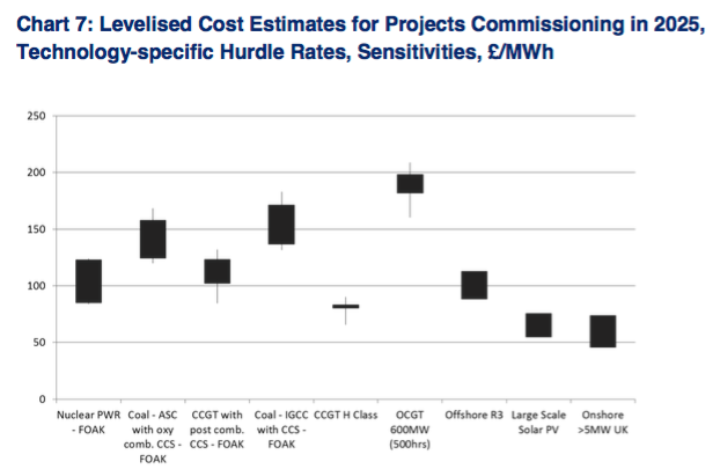BEIS – Beginning to row in the right direction?
Following a deluge of announcements under the shadow of Trump, is BEIS getting into gear?
By Jonny Marshall
Share
Last updated:
Hidden away from the headlines last week, a wave of new consultations reports and data was released from the Department for Business, Energy and Industrial Strategy (BEIS). Largely dormant until now, the newly-formed department appears to be giving us a glimpse into how it will begin to create a low-carbon industrial strategy and what direction it will take on the UK’s energy sector.
As the world awoke to the news of Mr Trump’s ascendency to the White House on Wednesday morning, BEIS quietly released upwards of 20 documents. These included the hotly anticipated call for evidence on plans to phase out coal power in the UK by 2025, new projections showing that onshore wind and large-scale solar will be the cheapest new sources of electricity within a couple of years, and information offering clarity into the next round of auctions for offshore wind capacity, to the relief of investors. Whether these were released under the shadow of Mr Trump is open for speculation, although with only the most outdated and perennially-ignored organisations and commentators proposing more coal use, more expensive power for the UK’s homes and businesses, and more uncertainty for investors, this seems unlikely.
Progress carried on for the rest of the week, again largely hidden from the front pages by events on the other side of the Atlantic. The release of a consultation on a smart, flexible power system in the UK (released just days after an excellent report on the exact same subject from Policy Exchange) was welcomed by the industry, before Greg Clark finished the week at the Energy UK conference, announcing that fears around the intermittency of wind and solar power were overblown, and that those pushing these claims for years have been “proven wrong”.
“It was said our power system could not cope with a significant percentage of our power coming from renewables. The doubters have been proven wrong. We now get 14% of our electricity from intermittent sources and our electricity supply remains the most reliable in Europe.”
- Greg Clark, Secretary of State for Business, Energy and Industrial Strategy. Speaking at the Energy UK conference on November 10, 2016
The evidence against the “doubters” has been mounting for some time, culminating in a report from Aurora Energy Research showing that the cost of balancing the power from solar panels (smoothing out the peaks and troughs in supply from an intermittent energy source) is just £1.30 per megawatt hour. This figure is far below those previously in the public sphere, and represents a sizeable discount on the £10 per megawatt hour used by the Committee on Climate Change. Furthermore, if realistic amounts of battery storage are added to the grid alongside more solar panels in the future, Aurora found that the balancing cost becomes a balancing benefit, as the combination makes it easier to flex supply to meet demand.
Moving on to consider BEIS’ latest estimations on the cost of generation technologies (the first since 2013), and the case for more renewables strengthens further. The government’s own figures now show that the cost of power from a gas plant commissioned in 2015 would be £65-68/MWh, compared with £47-76/MWh for onshore wind and £71-94/MWh for large-scale solar. For projects commissioned in 2025, however, large solar and onshore wind will be cheaper than unabated gas, with offshore wind not far behind.

A report by E3G and Imperial College, out this week, further shows how renewables and flexibility go hand-in-hand. The report finds that consumers can save £4 billion every year if the government gets the next steps right in the energy system - a pertinent figure, with energy prices on tabloid front pages this week, and potential music to the ears of BEIS.
Unfortunately, a few causes of concern remain. Despite early rhetoric (and leading the world in climate legislation with the Climate Change Act) the UK is yet to ratify the Paris Agreement. Greg Clark’s absence from the COP22 climate talks in Morocco has also been noticed by commentators; this will be the first time for many years that the UK delegation has been headed at a level below that of the Secretary of State.
Despite these cavils, last week’s updates from BEIS show that it is on something of a roll. Now the government appears to be getting back on track after widespread post-Brexit reshuffles.
Eyes are set on Number 10 to ratify the Paris Agreement, potentially throwing its hat into the ring for a leadership role in driving progress now the USA is expected to take a back seat. Next door at Number 11, Mr Hammond has a pressing climate policy on his to-do list, with the Carbon Floor Price set to be reviewed in the Autumn Statement on November 23rd. With BEIS seemingly on the right track, and other departments also rowing in the same direction, that post-Brexit trumpeting that the UK would scale back climate change commitments is becoming more muted by the week.
Share